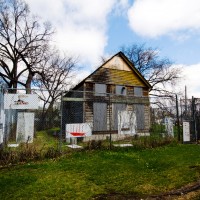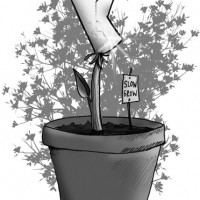Robert Galston
-

Lost Winnipeg
South Point Douglas, that narrow peninsular neighborhood east of Main Street and south of the CP Railway, experienced a 35 per cent population increase between 2001 and 2006, the 2006 Census revealed. And while that might sound impressive in a city that had an overall increase of just over two per cent in the same period, the boom only brought South Point Douglas’ population to 230, up from 170 persons.
-
Looking back on our future
By the 1960s the teeming optimism that permeated Winnipeg’s civic condition at the turn of the century had long since vanished. Never mind Chicago of the North, the city was poised to play second fiddle to Calgary and Edmonton. In the midst of the jet age, Winnipeg’s tallest office building was still an embarrassing 13 floors – the McArthur building at Portage and Main, a slender but tacky relic from 1910.
-

The facade of mediocrity
For the Reiss family’s Bedford Investments company, it has taken more than 15 years of willful neglect to finally win approval to demolish the Ryan Block for a parkade. Keeping the facade (or simply talking about it) is simply becoming another method, and the City of Winnipeg is giving $1.5 million in municipal heritage grants to Bedford Developments to rebuild the facade of the 114-year-old warehouse and incorporate it into the parking structure.
-

Upwards and onwards
In a time of economic loss and uncertainty around the world, a great deal of comfort has been taken here in Manitoba’s ostensibly stable economy. Owing to the province’s diverse set of natural resources and the nationalization of the largest of those – hydro-electricity – Manitoba has never really had one leading sector. Because of this, Manitoba has gone for years without experiencing sharp economic declines.

